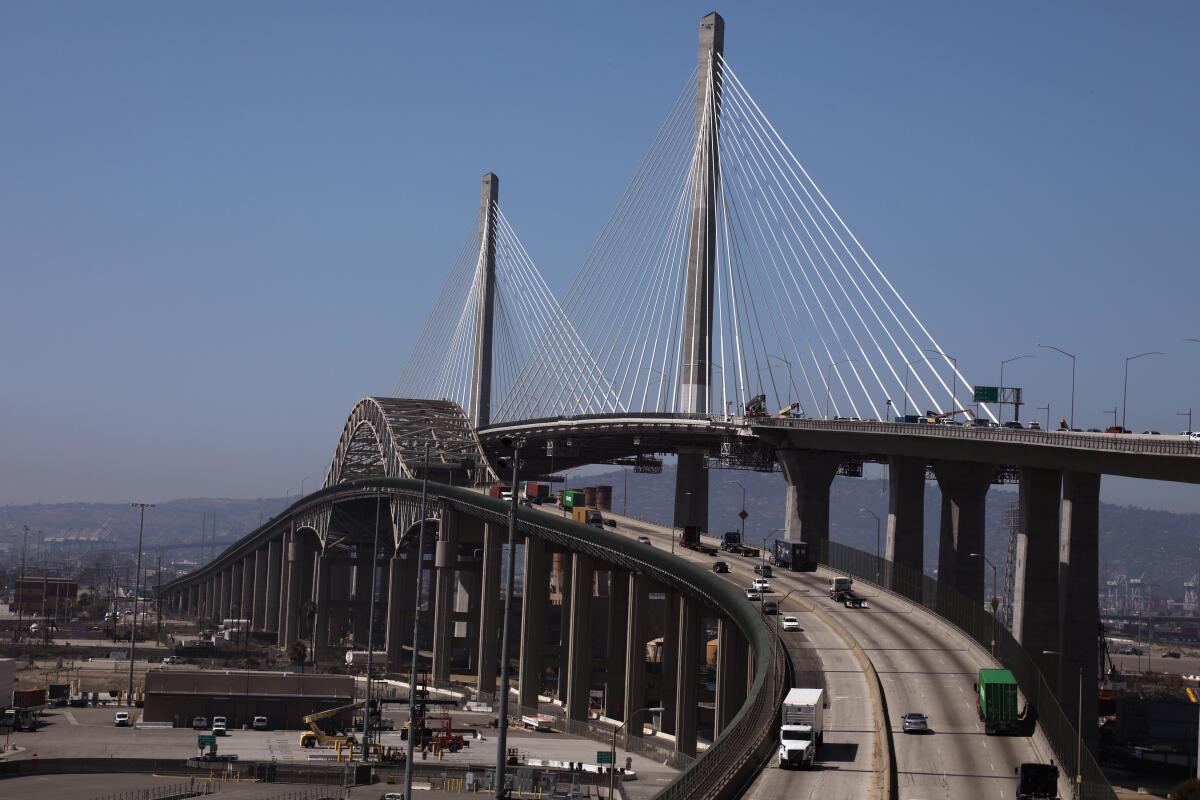Demolition to begin in May for old Gerald Desmond Bridge at Port of Long Beach

Officials with the Port of Long Beach announced Friday that demolition on the old Gerald Desmond Bridge is set to begin in May.
The old bridge opened in 1968 and is named after a former Long Beach city attorney who helped secure funding to build the 5,134-foot-long span, officials said.
It was decommissioned in October 2020 when its replacement, also called the Gerald Desmond Bridge, opened.
“The Gerald Desmond Bridge helped this port complex become one of the busiest in the world,” Port of Long Beach Executive Director Mario Cordero said. “It helped us reach new heights during an era of incredible, transformative growth in international trade. We will bid a fond farewell to the Gerald Desmond, and honor the memory of the man for whom it was named. The new bridge that replaced it is a fitting and lasting tribute to the old span.”
The new bridge is designed to last 100 years and provides more clearance from the water in the shipping channel below, which will allow larger cargo vessels to enter the port’s inner harbor once the old bridge is demolished, officials said.
The new Gerald Desmond Bridge, with twin 515-foot towers, will accommodate ever-taller container ships and thousands of cars a day.
Demolition operations on the old bridge will start with the dismantling and removal of the main span — an operation that will shut down the port’s Back Channel, a canal that runs under the bridge, for a weekend, officials said.
The Back Channel will be closed to all vessels from 6 a.m. May 7 to 6 a.m. May 9, as the old bridge’s main span is disconnected and lowered onto a barge, officials said.
Vehicle traffic on the new bridge won’t be affected by the demolition operations, officials said.
“Removal of the main span is one of the first steps in demolishing the Gerald Desmond Bridge,” they said. “Following the first weekend, further significant waterway impacts are not anticipated. Full demolition is expected to be concluded by the end of 2023.”
Demolition will cost $59.9 million, officials said, adding that the cost is included in the overall $1.47-billion budget used to build the new bridge.
The port awarded a contract in July 2021 to Kiewit West Inc. to dismantle and remove main steel truss spans, steel plate girder approaches, abutments, columns, access ramps, foundations and other pieces of the old bridge, officials said. Metal and other materials removed from the old bridge will be hauled to a recycling site for salvaging and reuse.

The new bridge’s journey from its conception a month after 9/11 to its opening in 2020 lasted 19 years and spanned the globe, with contributions from wind tunnels in China, engineering studios in Germany, a steel mill in Arizona and union halls in California.
Semyon Treyger was there from the start when the Port of Long Beach awarded his employer, the engineering firm HNTB, and Parsons Transportation Group the contract in 2001 to come up with a replacement for the existing bridge.
Treyger, who was trained as a structural engineer in the Soviet Union and immigrated to the United States in 1979, began working with Danish bridge architect Poul Ove Jensen to solve a problem.
Container ships — the behemoths of modern commerce — were getting larger and unable to access terminals in the port’s back bay, except at low tide, because the existing bridge did not have the required clearance.
Neglect was taking a toll on the old bridge by 2010 as authorities slung up netting to catch pieces of concrete that sloughed off the aged span.
The new bridge’s cable-stayed design, dubbed a “postcard bridge” by officials for its looks, required less building material and took up less space when compared with other designs, such as suspension bridges, officials said.
More to Read
Sign up for Essential California
The most important California stories and recommendations in your inbox every morning.
You may occasionally receive promotional content from the Los Angeles Times.












